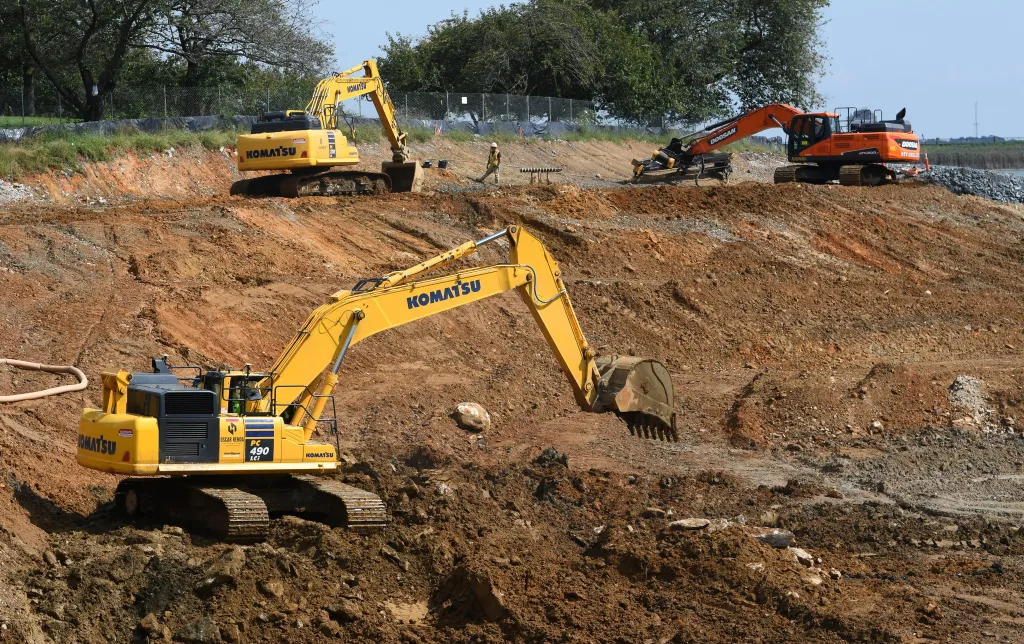
As cities grow and skylines change, the sound of progress is everywhere. Jackhammers pound against concrete and pavement, pile drivers shake the ground, bulldozers roar across job sites, cranes rattle as steel beams rise into place, while trucks rumble through neighborhoods. These noises are merely the soundtrack of progress for many, announcing the arrival of new houses, roads and schools. However, there is a much less obvious reality hidden beneath this cacophonous development: Construction noise poses a risk to people’s health and welfare in addition to being an irritation.
The World Health Organization warns that long-term exposure to sound above 85 decibels can harm health. Yet on construction sites, sound levels routinely range from 85 to 100 decibels. A pile driver, for instance, can reach 101 decibels at 50 feet, a concrete saw about 90 decibels, and a jackhammer around 88, according to the Federal Transit Administration. Even the “quieter” machines, such as bulldozers, loaders and mixers, still generate noise around 85 decibels. For context, normal conversation hovers at 60. At these levels, the Occupational Safety and Health Administration requires hearing protection, but compliance is inconsistent across job sites.
According to the Centers for Disease Control and Prevention, around 22 million American workers are exposed to dangerous noise levels annually, with the construction sector being one of the most vulnerable. Workers bear the most immediate consequences: permanent hearing loss, chronic fatigue, elevated stress and mental strain. One Maryland engineer I interviewed admitted he wished he had known more about protective measures earlier in his career because now he struggles daily with impaired hearing, a consequence of years spent in noisy environments without adequate safeguards.
But the impact of construction noise does not stop at the worksite fence. Families in nearby neighborhoods face nightly disruptions, children struggle to focus in classrooms located near active projects and older residents often withdraw socially because constant background noise makes conversation exhausting. The Environmental Protection Agency notes that nighttime noise above 55 decibels disrupts sleep and weakens immunity. Research in Environmental Health Perspectives shows that chronic noise exposure is linked to higher blood pressure, heart disease and cognitive delays in children.
There are financial repercussions for construction noise as well. Long-term construction zones frequently see more than a 5% decline in property values. When customers avoid noisy or inaccessible streets, small businesses suffer. Chronic noise-induced cardiovascular disease, stress-related illnesses and hearing loss are all expensive for health systems to address. Additionally, projects stagnate, expenses rise and public trust erodes when communities turn to litigation. When communities resort to lawsuits, projects stall, costs climb and public trust declines.
Communities that are already at risk bear the brunt of the load. Disruptive infrastructure projects disproportionately affect minority and low-income communities, posing serious concerns regarding equity and environmental justice.
Solutions exist, and many are practical. Electric-powered equipment can cut noise by 10 to 15 decibels. Noise barriers and acoustic enclosures can reduce exposure by as much as 20 decibels. Green walls, porous asphalt and vegetative roofs absorb sound while also improving air quality. Cities like New York enforce strict construction noise codes, London’s Crossrail project successfully used acoustic shielding, and Singapore employs real-time noise monitoring with smart sensors. These approaches prove that noise can be managed when there is the will to act.
When residents are informed early and included in planning, complaints decrease, and trust improves. Communities may tolerate temporary disruption if they feel heard and assured that steps are being taken to protect their health.
Development is essential. Cities must build roads, bridges, schools and homes to meet growing demands. But progress should not come at the cost of public health. The data are clear: Unchecked construction noise damages hearing, disturbs sleep, raises the risk of heart disease and diminishes quality of life.
Construction noise is more than background; it is a hidden public health crisis. As we plan the cities for tomorrow, the question we must ask is simple: Can we build without breaking the health and peace of mind of the very people these projects are meant to serve?
Samuel S. Akosile is a graduate student in the Department of Civil Engineering at Morgan State University.



